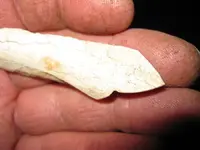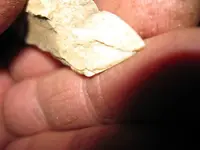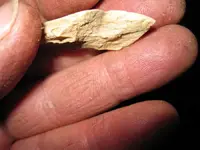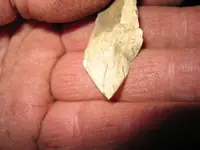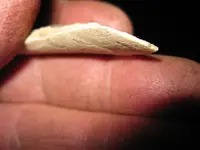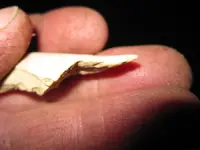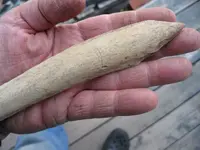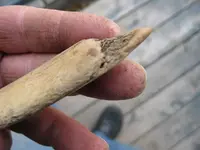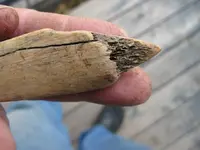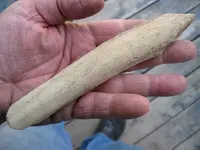Re: mussel shell tool
larson1951 said:
thanks neanderthal
I don't think heat because they used these for making beads and game pieces
they also ground them up and mixed them with clay and black ash to make pottery
I have seen hundreds and hundreds of these and none ever had any signs of being burnt
or did you mean putting them in boiling water??
can you explain what you mean?
I am interested in your answer
I have found quite a few of these tools
What you said.. putting them in hot water (or steaming). Like a clambake, it will pop them right open without effecting the shell at all. We used to sell "green" shell (alive), and then different grades of just mussel shell itself. Number 1 was fresh shell. We would put them in hot water to pop them open and then just sling out the meat. I did have oyster knives, but cutting them open is much more of a pain in the arse than steaming or boiling. I'm pretty sure the natives realized this too.
I learned a lot from freshwater shell diving. We used to clean old stained and crusty shell with Muriatic Acid. It's amazing what it could do. Clean the shell with Muriatic Acid and lay it out to bleach in the sun. It would turn an otherwise worthless shell back into a sellable #2 or sometimes #1. I also took the time to experiment on Muriatic Acid with flint and other materials. Muriatic Acid is often used for cleaning and etching stone and can be dangerous stuff. Some people use it for cleaning pottery or points also, although I can't recommend it for any other than extreme circumstances. It has been used by fakers (along with other forms of acid) for years. Once you get used to seeing the signatures of it, it's easily detected. It tends to leave a chartreuse hue to many stones, especially visible in the vugs you will find in Burlington and some other white/light colored lithics. I also done many experiments with Potassium Permanganate (it's hell on bone), lime, calcium carbonate, etc, etc. You have to be familiar with what each of them do if you want to be able to detect them though.
Sorry, I got completely off topic.
I don't know what all of the bone artifacts are. I don't think we will ever know what some of them are, as many could be impulsive items made for a singular task at hand. Some I'm sure are basketry, weaving, or pottery making tools. Use wear studies would help greatly to determine their usage, but even that could be iffy.
I very much enjoy your posts and seeing what you find. Bone and other perishable items have always fascinated me and I find them to be more telling about the people who made them than flint artifacts.



